YouTube has content that’s been created from bursts of creativity alongside carefully calculated strategy. People come to watch videos meant to entertain them and educate them alike, and brands put an endless amount of effort into doing just that.
There’s a gap in YouTube marketing, however, that many marketers and businesses are missing, which is weakening their overall effort, and that’s their YouTube descriptions.
Even though the focus is geared towards the videos you’re creating on YouTube, the descriptions still matter a great deal and for several different reasons. In this post, we’re going to take a look at the best YouTube description template you should be using, how to alter it to fit your channel, and description tips to get more views.
Why YouTube Descriptions Matter & What They Should Accomplish
The focus is the video. People come to YouTube to watch stuff. That’s a good thing to remember, but it’s also key to consider that there are factors influencing that videos users watch, and that the description is perhaps the most significant one.
An interesting YouTube thumbnail or video title on its own may capture some interest, but in many cases it’s a solid description that gets more clicks. The description can be a key component in explaining what the video is about, why users should care, and encouraging them to click.
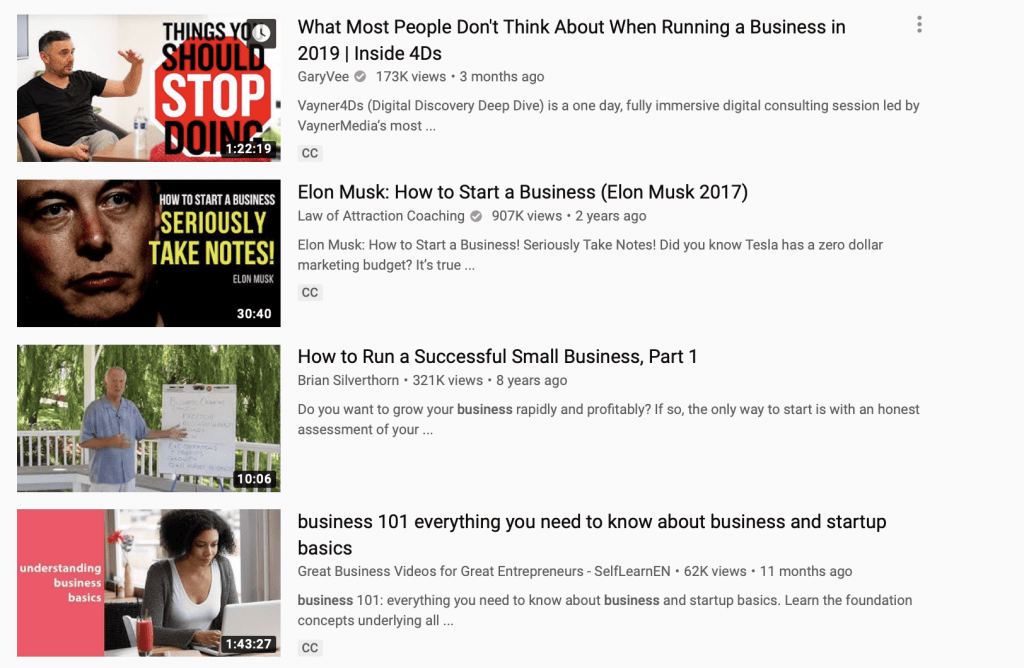
The description also has additional purposes, too. When optimized correctly for search, it can help you show up in relevant searches both in Google’s engine and YouTube’s, increasing your visibility significantly. This means more views, and more users who you can connect to and establish relationships with.

It also gives you a place to drop links to your site, a landing page, or third-party sites where you’re trying to send users. You can use affiliate links for some passive income, or promote your blog, product, or service. This can keep users moving through the funnel.
This is true, by the way, of both your channel description and your video descriptions. You want your channel to be as search-friendly and interesting-on-first-sight as your videos themselves, so we’ll look at templates for both.
The Best YouTube Description Template for Your Channel
Ideally, your YouTube channel descriptions will be friendly and engaging, as if you’re talking to a friend. It’s important to stress what your channel is about and what sort of content you’ll be offering users. You can also share links to your site or social profiles, and (if consistent) your uploading schedule.
The following template can work well, just remember to adapt it to your particular brand voice:
“[Brand name] is a leading expert in the [your industry] industry, helping [hundreds/thousands] of customers with [whatever it is you do]. We’re passionate about [topic], [topic], and [topic], and we’re excited to share that knowledge with you.
We post [posting schedule], and we can’t wait to see you there.
You can check us out online here: [link to landing page/site]”
This may turn into something like this:
“Snappa is one of the leading graphic design tools for marketers, business owners, and content creators with no design experience. We’ve helped thousands of customers create gorgeous graphics all kinds in an instant. We’re passionate about making design more accessible and marketing campaigns more successful, and we’re excited to share that with you!
We post every Tuesday at 5pm.
You can check out our site and start your free trial here: snappa.com”
Remember that you don’t have to stick to the exact script. Hubspot has a solid example that follows this basic template here, defining their value proposition and capturing interest fast:
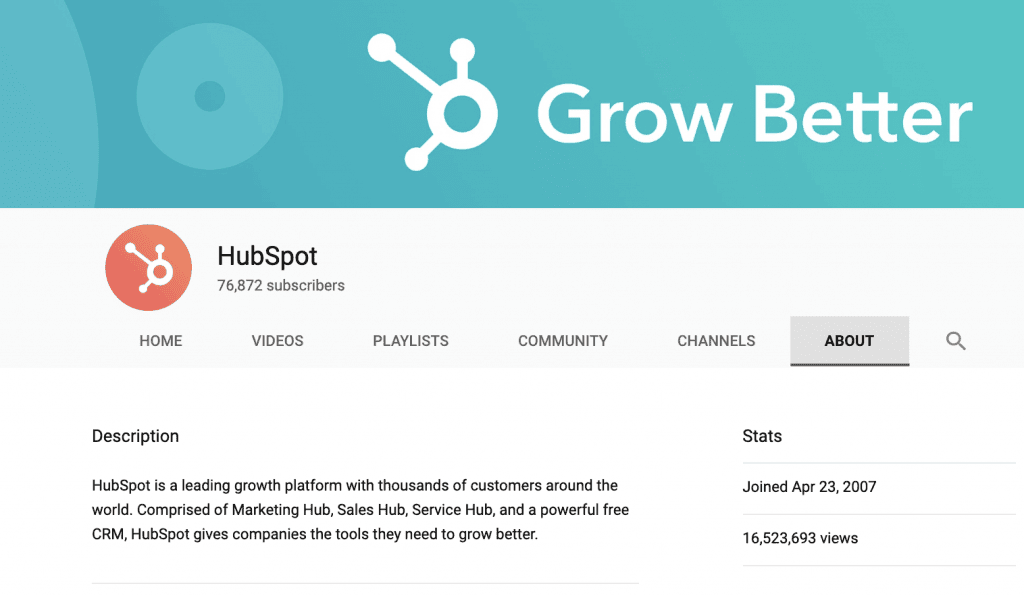
The Ideal YouTube Description Template for Videos
There is no single formula that you have to follow when it comes to YouTube videos, but we’re still giving you a solid description template that you can use nonetheless.
Video descriptions are often going to be longer than channel descriptions, and that’s because in some ways, there’s more to cover.
Your video descriptions need to:
- Leverage the first few sentences to explain the video so that people will click
- Include keywords up front to improve visibility
- Explain why the video is important
- Share any relevant links so users can take further action
The template, therefore, is going to look different from the one above, because a single script doesn’t work. That being said, here’s the general format I like using:
First sentence: Attention-grabbing lede designed to capture immediate interest. Almost but not quite like clickbait. This can include a question or a one-sentence story.
Second, third, and maybe fourth sentences: Explaining what the content is and what happens in the video.
Next line: Crediting anyone in the video with you, or the transcript to the video if applicable. Time stamps, if the video is long, can also work well here.
Next section: Links to any products or services you discuss in the video. This can be merged with the last part of the template…
Next section: CTA combined with the link you want people to take action on.
This template is flexible, but it needs to be, because each video description may require something different. All of the following YouTube descriptions, after all, fit the basic template but do so in their own way, sometimes reorganizing the template to fit their needs and search intent:
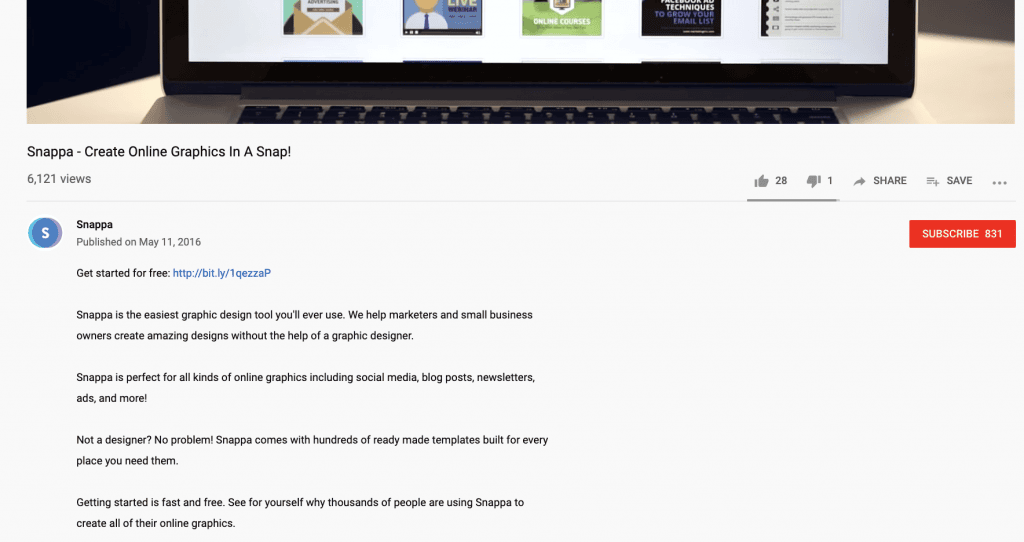
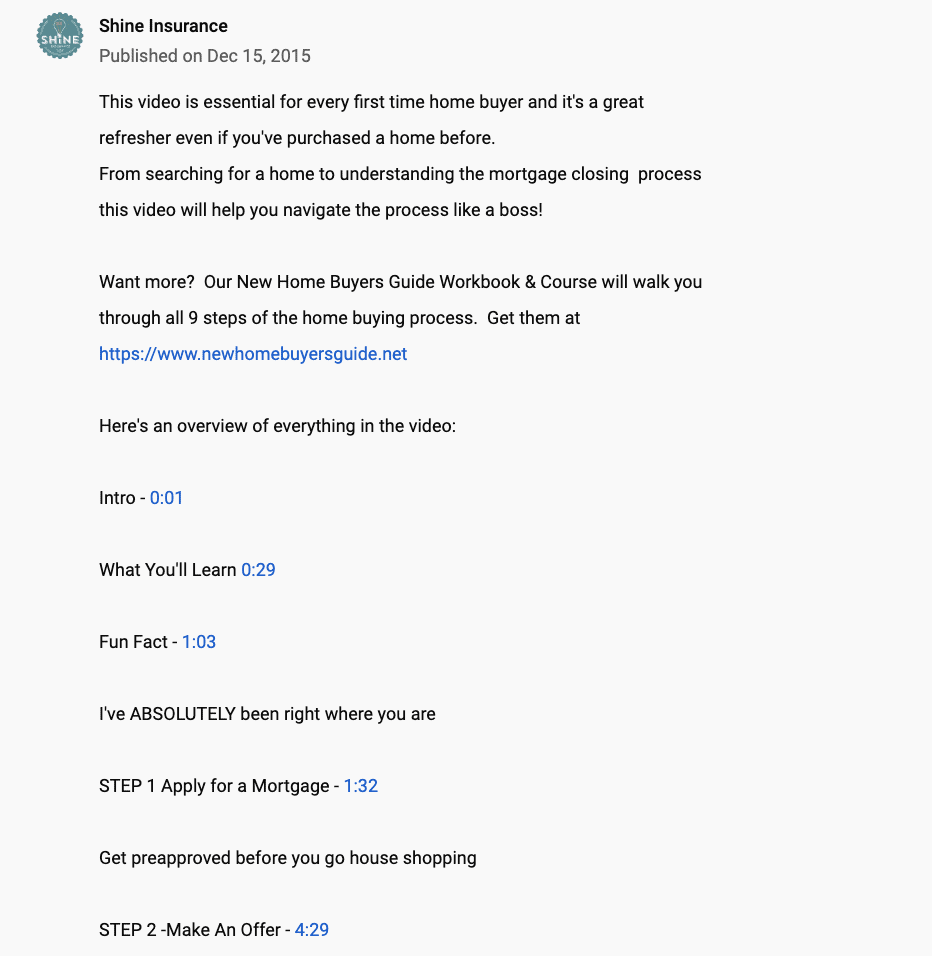
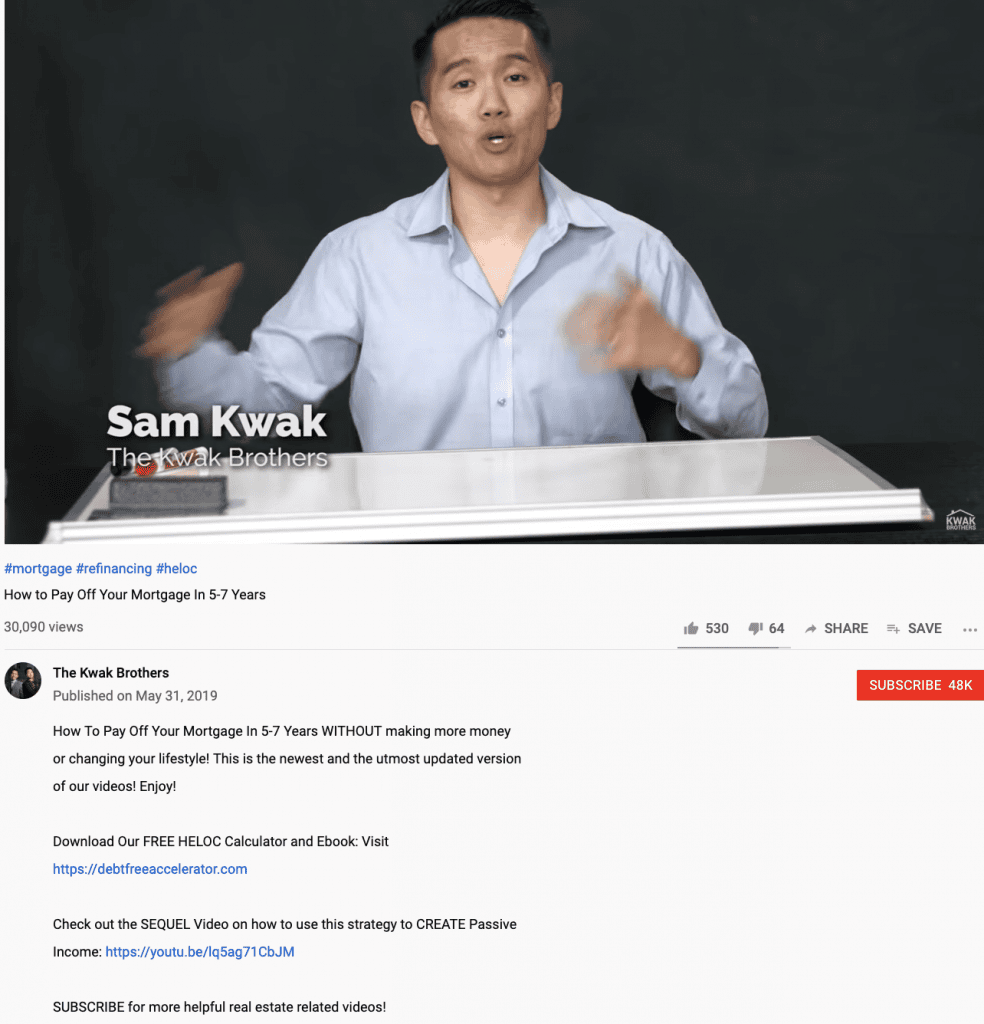
Tips to Write Strong YouTube Descriptions
When you’re writing YouTube video descriptions, remember to always follow these tips for best results, no matter what template you’re using:
- Include keywords early on. Include at least the primary keyword that you’re targeting early on in the description, ideally in the first sentence. If the search term is visible in your video description that can increase clicks, but it also signals relevance to search engines, which means more visibility.
- Use the frontloading technique. I call sticking the most important information up front the “frontloading” technique. You want the attention-grabbing part of the description and some of the context-adding part to show up early on while you’ve got a chance to keep people engaged.
- Act like you’re talking about an exciting movie. If you wanted to convince a friend to watch a movie without spoilers, think about how you’d describe it to them. Use that same excitement when you’re writing your descriptions, considering what would make someone feel like they need to watch that, too. Including a value proposition, explaining what they get out of watching, is often a good call.
- Never forget the CTA. All descriptions should end (or begin, potentially) with a CTA motivating people to take action. In many cases, this should include a link. Talk about free trials, the ability to get more information, or download a lead magnet if these are applicable, trying this as a key opportunity in your sales funnel.
Final Thoughts
Your YouTube descriptions for both your videos and your channel are important for brand building. They can also help engage your audience, capture their interest, boost your search visibility, and offer more links and context for users to follow after the fact. They should be as strategic as the video content that you’re creating on the platform, and be given as much care.
When you’re getting started (or if you want to boost your results), use the templates above. Just remember to tweak them so that the tone and language fits your brand, and always use language that your particular audience will respond to.
Need to revamp your YouTube branding to match your amazing new descriptions? Learn more about how to create a stunning YouTube banner or YouTube thumbnail that will get people clicking.
What do you think? What YouTube description template do you use? How do you optimize your descriptions for everything they need to do? Share your thoughts and questions in the comments below!
